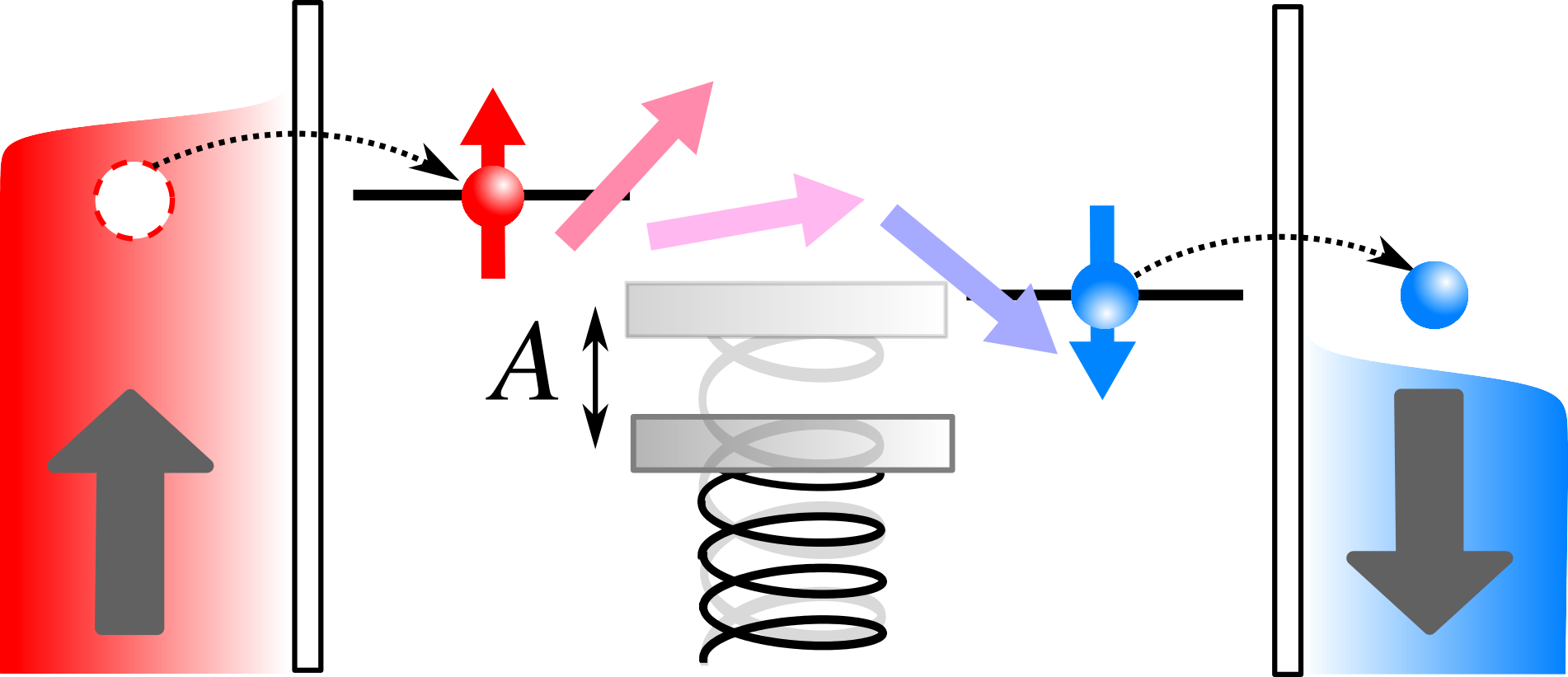
Engineering the output power of a one-atom laser
Hybrid systems combine elemental components with distinct tunable properties, offering a way to explore novel mechanisms of coherent energy exchange. Here, we have considered a resonator that starts to oscillate when electrons with fixed spin are injected from electrical contacts to a quantum dot, realising a highly-efficient single atom laser. We have shown that the common theoretical tool to describe the laser — the rotating-wave approximation — becomes insufficient, because a large oscillation amplitude can be achieved even with a small interaction strength. Furthermore, this strong pumping leads to a regime in which the resonator can oscillate in two possible ways, characterised by a different amplitude. Since the electric current is determined by this amplitude, it behaves like a «telegraph» when monitored in time, as a manifestation of the bistability occurring in the resonator. Our proposed single-atom laser can be realized on a variety of platforms, with the resonator formed by either a microwave cavity or a mechanical oscillator. This novel, nonlinear dynamical regime opens up a promising route to study unconventional coherent and nonlinear interactions without the need for ultrastrong couplings.
M. Mantovani, A. D. Armour, W. Belzig, and G. Rastelli, Dynamical multistability in a quantum-dot laser, Phys. Rev. B 99, 045442 (2019) [arXiv].
